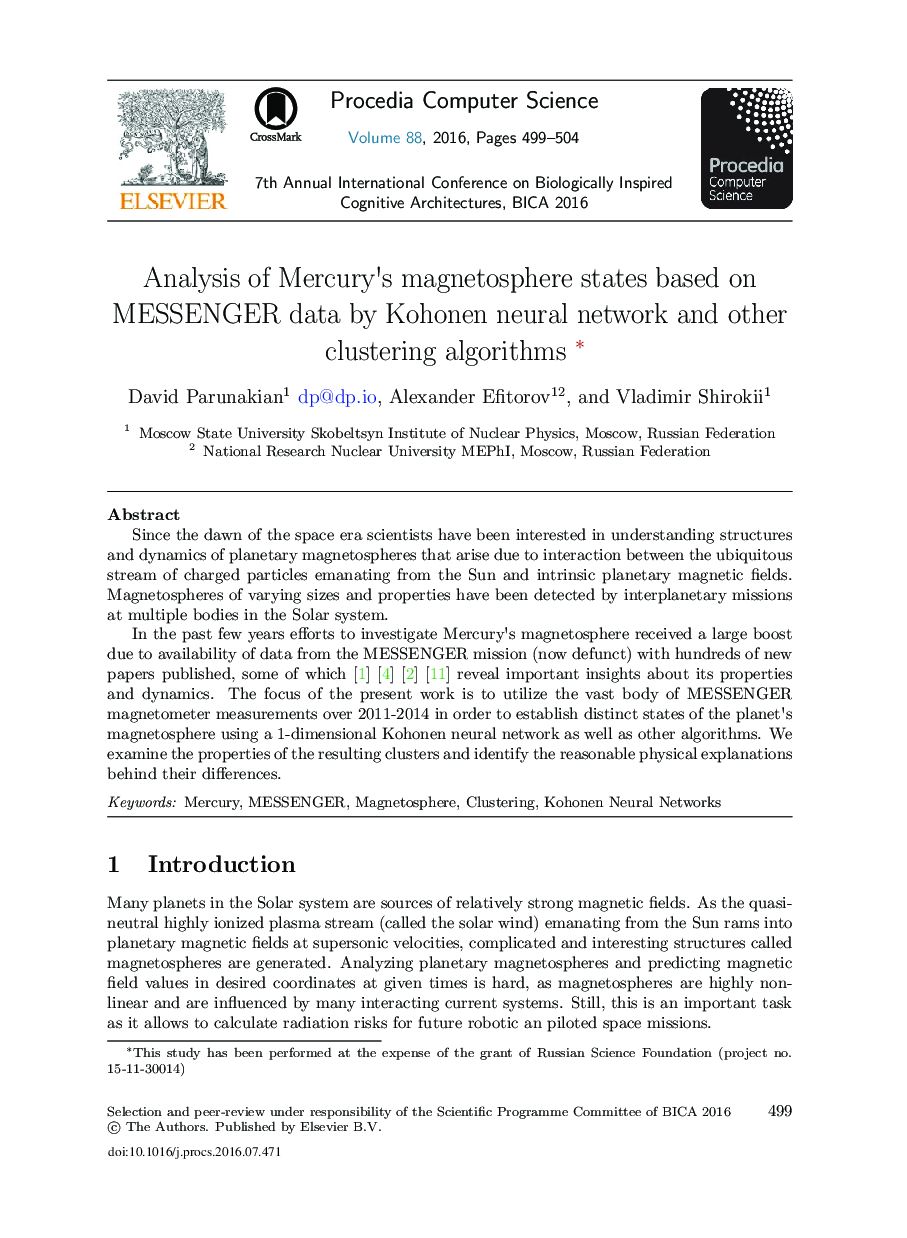| Article ID | Journal | Published Year | Pages | File Type |
|---|---|---|---|---|
| 4962310 | Procedia Computer Science | 2016 | 6 Pages |
Since the dawn of the space era scientists have been interested in understanding structures and dynamics of planetary magnetospheres that arise due to interaction between the ubiquitous stream of charged particles emanating from the Sun and intrinsic planetary magnetic fields. Magnetospheres of varying sizes and properties have been detected by interplanetary missions at multiple bodies in the Solar system.In the past few years efforts to investigate Mercury's magnetosphere received a large boost due to availability of data from the MESSENGER mission (now defunct) with hundreds of new papers published, some of which [1] [4] [2] [11] reveal important insights about its properties and dynamics. The focus of the present work is to utilize the vast body of MESSENGER magnetometer measurements over 2011-2014 in order to establish distinct states of the planet's magnetosphere using a 1-dimensional Kohonen neural network as well as other algorithms. We examine the properties of the resulting clusters and identify the reasonable physical explanations behind their differences.
